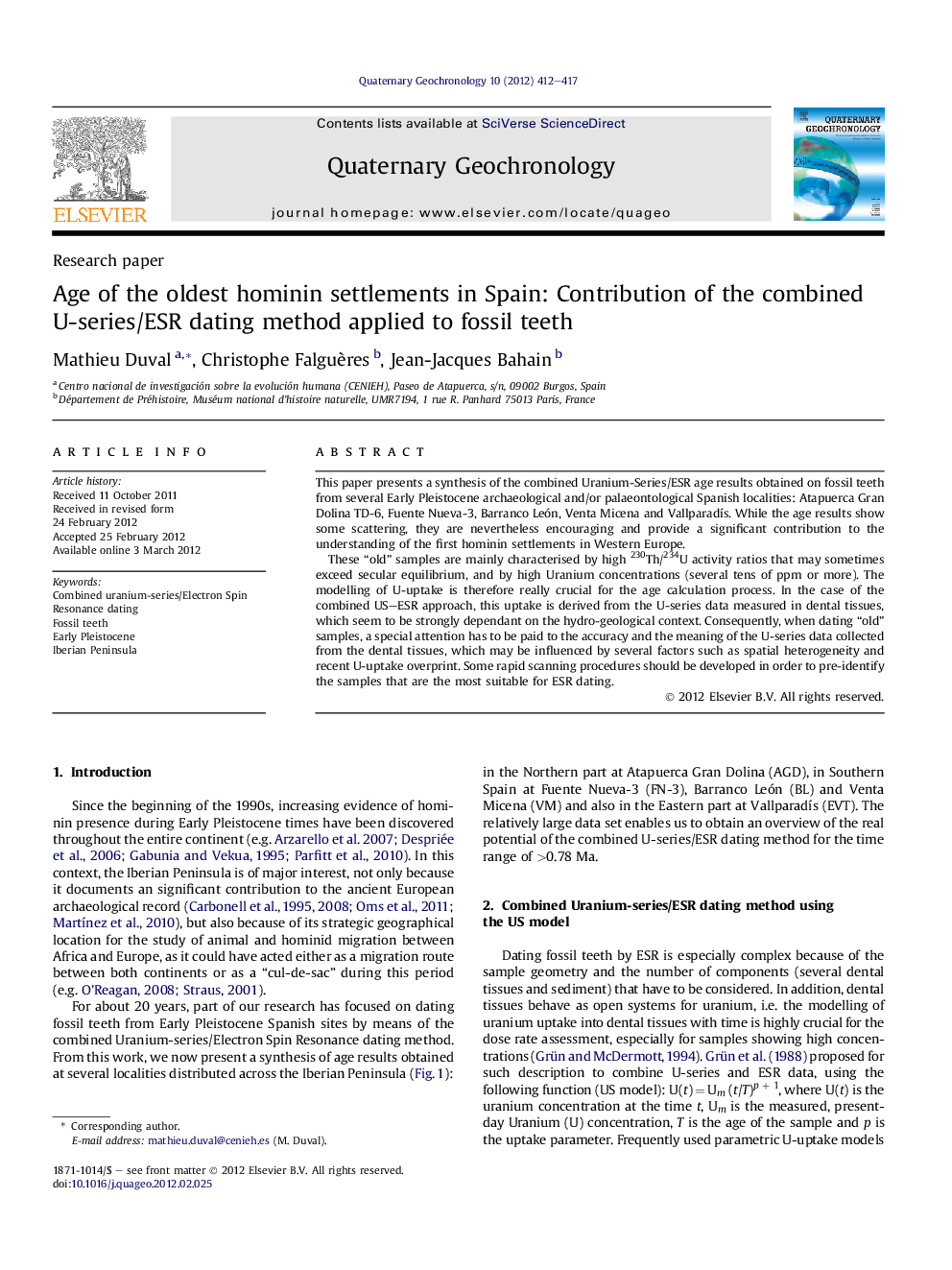| کد مقاله | کد نشریه | سال انتشار | مقاله انگلیسی | نسخه تمام متن |
|---|---|---|---|---|
| 4725154 | 1639866 | 2012 | 6 صفحه PDF | دانلود رایگان |

This paper presents a synthesis of the combined Uranium-Series/ESR age results obtained on fossil teeth from several Early Pleistocene archaeological and/or palaeontological Spanish localities: Atapuerca Gran Dolina TD-6, Fuente Nueva-3, Barranco León, Venta Micena and Vallparadís. While the age results show some scattering, they are nevertheless encouraging and provide a significant contribution to the understanding of the first hominin settlements in Western Europe.These “old” samples are mainly characterised by high 230Th/234U activity ratios that may sometimes exceed secular equilibrium, and by high Uranium concentrations (several tens of ppm or more). The modelling of U-uptake is therefore really crucial for the age calculation process. In the case of the combined US–ESR approach, this uptake is derived from the U-series data measured in dental tissues, which seem to be strongly dependant on the hydro-geological context. Consequently, when dating “old” samples, a special attention has to be paid to the accuracy and the meaning of the U-series data collected from the dental tissues, which may be influenced by several factors such as spatial heterogeneity and recent U-uptake overprint. Some rapid scanning procedures should be developed in order to pre-identify the samples that are the most suitable for ESR dating.
► US–ESR dating of Early Pleistocene archaeological and/or palaeontological Spanish sites.
► Large data set (20 teeth; 57 dental tissues) for such time range (>0.78 Ma).
► These “old” samples are globally characterised by high U-concentration values.
► The U-uptake modelling is highly crucial for the age calculation.
► U-series data collected seem to be strongly influenced by the hydro-geological context.
Journal: Quaternary Geochronology - Volume 10, July 2012, Pages 412–417